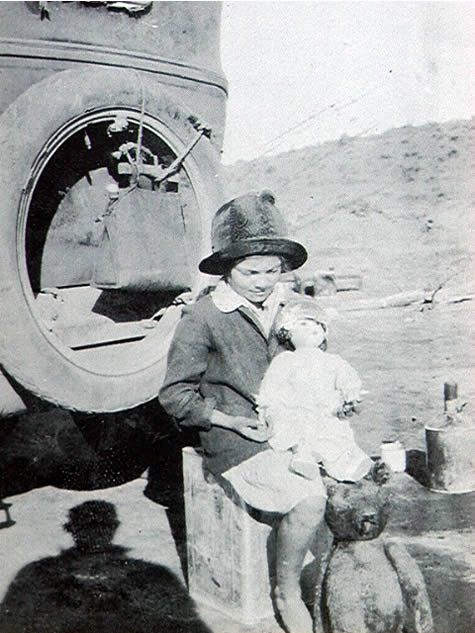THEME: Pine Creek Region
SUBJECT AREA: Literacy
TOPIC: Women in the Northern Territory
‘No Place for A Woman’
You are familiar with the logistics of our daily travel as we’ve crossed Australia; our camping/living conditions and distances travelled per day. But imagine the year 1927, you are eleven years old and your family is to undertake a journey through the same country we’ve travelled. Quite different, you think? The following is an excerpt from “No Place for A Woman” by Mayse Young. Mayse’s father was employed as a railroad construction worker, building miles of railroad to facilitate the mining industry in the Northern Territory as well as other locations.
“His gang was the lifting gang, and their function was to pound and pack the gravel and soil under the sleepers, (railroad ties/planks in the railway bed) and set the railway lines firm and straight, ready for the trains to travel over.”
After learning of railway work near Pine Creek, the family considered the move from the north Queensland coast, through Mt. Isa, north toward Katherine with their final destination, Pine Creek. They would travel in two vehicles; one, a truck, the other as backup, a Dodge car. A total of seven people would be in transit. Upon learning that Mayse’s father would move with the entire family, he was told, “It’s a man’s country,” the friend said. “You’d be foolish to take a family up there. It’s no place for a woman.” Mayse’s mother pointed out that it couldn’t be worse than the dry red earth, dust storms and flies around the Isa. Being a plucky soul, she was willing to take the chance.

As they set up camp each evening, it is reminiscent of what we’ve faced each day on the road as we prepare our evening camp.
“When we set out for a new camp, the wagon was loaded with folded tents, swags, tucker (food) boxes, our home-made utensils…hurricane lamps, water bags, and rope (hanging) from the sides. It is little wonder when we set up camp near one little town that a kid driving a billy-goat cart came down to ask when the circus was opening.”
It is interesting to compare distances travelled per day between a 1920s vehicle and a twenty first century push-bike. We have, on the average, completed approximately eighty kilometres per day (fifty miles) depending upon terrain and road surfaces. Mayse paints a similar picture as her family made their way through the Outback.
“We nursed the vehicles along, never pushing too fast, especially over the rough patches, averaging about fifty miles a day. One treeless plain was 125 miles wide - three days' travelling. We had to carry firewood, and water, and took care to check these supplies carefully each day before setting out.”
Bore water has played an important role in selecting our campsites or midday stops. If we are fortunate enough to locate one near the route, it provides us with water and a way to cool off in the midday sun. It was even more important to a family of seven and their chosen route followed the bores.
“As the ‘road’ was really a stock route, approximately every twenty-five miles we found a bore and windmill to water travelling stock. We played “I spy the black dot’-which would be a windmill. From the time we lost sight of one windmill our eyes were searching the horizon for the dark spot that meant another one was coming up.”
As we near our journey’s end, we think back to the memorable places we’ve visited. The toughness of the terrain, the wild, untamed land that we’ve cycled through, though often difficult, has left us with lasting memories. To a child, Mayse’s overland adventure was concluded with much the same thoughts.
“After days of travel on the roughest roads we had encountered, we finally crossed over…into the Northern Territory…a very lonely drover’s route. We had to carry water in drums: six drums to last fifteen stops. We camped one night on the banks of the beautiful Victoria River, with its pandanus palms and tropical growth along the banks…”
Suggested activities: Identify the use of primary (first person) resources as research material in writing of another era. Why is this type of resource important in learning of the past? How does it contribute to a ‘visual’ description for the reader? Why is the use of a primary resource important in recounting a historical event? In literature, why are primary resources a valuable tool used in story telling?
April